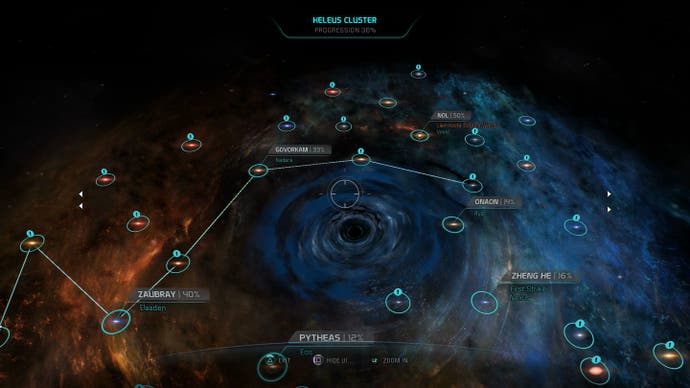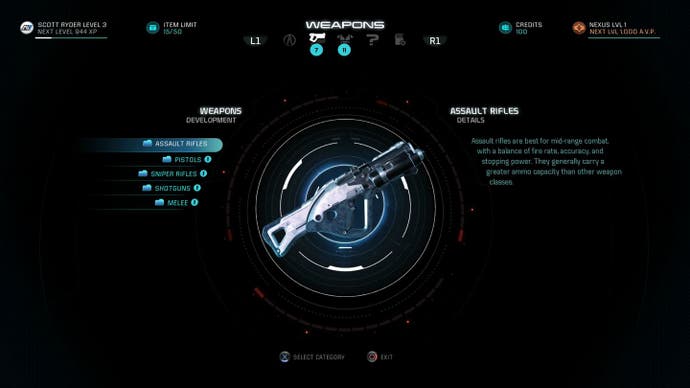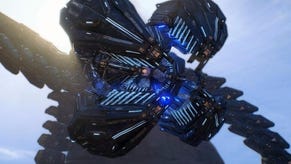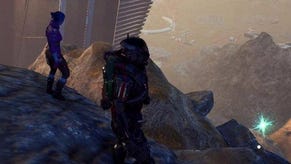Mass Effect Andromeda walkthrough: Guide and tips to exploring the new galaxy and completing all main missions
How to tackle and get the most out of Mass Effect's vast new setting.
Mass Effect Andromeda sees BioWare's space opera embark in a new titular galaxy on modern platforms PS4 and Xbox One, as well as returning to PC.
Taking notes from the studio's recent and more open adventure Dragon Age: Inquisition, there's a lot to see and do on the game's many planets.
Our Mass Effect Andromeda walkthrough will soon provide a complete step-by-step guide to the main story, and this Mass Effect Andromeda guide on how to get about exploring and fighting in these new distant pastures.
If you happen to be a die-hard Mass Effect fan, you may want to check out our sister site Jelly Deals, the folks over there have put together a guide to the best Mass Effect merchandise available. Everything from figures to colouring books, there.
Mass Effect Andromeda walkthrough
To start with your options will be limited, but once you've progressed through the story to the point that Eos is colonised the galaxy opens up and you are free to ignore the plot and see what's out there, or alternatively ignore the side content and just get on with the story.
It's advisable to at least do some of the side missions as you go as they'll provide levelling opportunities and additional perks, but none of them are compulsory.
Most exploration options and quests remain open after the plot has concluded, but any of the minor fetch quests involving the Nexus need to be done before starting the final mission.
- Mass Effect Andromeda: Prologue - Hyperion, Planetside, and Getting to Know the Nexus
- Mass Effect Andromeda: A Better Beginning
- Mass Effect Andromeda: A Trail of Hope
- Mass Effect Andromeda: Helping Havarl's Scientists, Meet the Resistance
- Mass Effect Andromeda: Hunting the Archon
- Mass Effect Andromeda: The Journey to Meridian
- Mass Effect Andromeda - Meridian: The Way Home, final boss

Other Mass Effect Andromeda guides
Squadmate missions and Loyalty missions
- Mass Effect Andromeda - Cora Harper missions Asari Ark, At Duty's Edge, A Foundation
- Mass Effect Andromeda - Drack missions Krogan Betrayal, A Future for Our People
- Mass Effect Andromeda - Vetra Nyx mission Means and Ends
- Mass Effect Andromeda - Jaal missions Friend or Foe?, Flesh and Blood
- Mass Effect Andromeda - Liam Costa missions Armor Diplomacy, Day Out on Aya, All In
- Mass Effect Andromeda - Peebee missions Secret Project, Remnant Scanner, Mysterious Remnant Signal
More soon!
Other missions
- Mass Effect Andromeda - Memory Trigger locations for the Ryder Family Secrets quest
- Mass Effect Andromeda - Voeld: Restoring a World
- Mass Effect Andromeda - Elaaden: Taming a Desert
- Mass Effect Andromeda - Kadara: Healing Kadara's Heart
- Mass Effect Andromeda - Havarl: A Dying Planet
- Mass Effect Andromeda - From the Dust, The Remnant Tiller
- Mass Effect Andromeda - Defeating the Kett
Other guides
Mass Effect Andromeda tips
The way you explore and fight is a little different to previous Mass Effect games, so it pays to learn the differences and how you can make it work for how you want to play.
Exploration
A large chunk of the game is devoted to exploration of the galaxy and a push to settle far flung planets, and this is accomplished in two basic ways.
First, and simplest, is visiting all the planetary systems and scanning them to see what you can find - mineral resources, new technology, and intel are yours for the taking.

The second and more substantial form of exploration is done on the surface of planets.
There are four you can explore in detail, and each features a number of Forward Station points to deploy, mining zones to clear, and Kett and Remnant outposts to conquer. We'll explore more of this at a later day, but if you've progressed through the story far enough to have settled Eos, you will have already covered the basic mechanics.
Character Interaction, Loyalty, and Romance
After completing each mission it's worth having a quick run around the Tempest to speak to everyone - they may just have a quip or comment relating to what just happened, but they may also open up additional quests.
Several NPCs will offer loyalty quests and completing those will unlock new abilities in their skill trees, and others will offer basic fetch quests or nuggets of information that may lead to something interesting.
Romance returns, too. Romance dialogue options will be clearly marked with a heart in the centre so pursuing the partner of your dreams should be simple enough to figure out as you play.
Research and Development
While some new gear can be acquired simply by picking it up from fallen enemies or containers, most of the higher end equipment will need to be researched and constructed using the terminal on the Tempest.
- Research: You'll have a few blueprints available from the start, and more can be acquired from containers you come across. Researching a blueprint requires the spending of Research Points gained by scanning items of interest as you explore. There are three types of technology - Milky Way, Kett, and Remnant - and each uses its own pool of points.
- Development: Once you've researched a piece of technology you'll need to build it, and this requires the use of mineral and biological resources which you can collect in a few ways: using mining zones in the Nomad, scanning planets and anomalies around the galaxy, collected as loot, or picked up from random outcrops on the surface of planets.
Combat
Combat has been tweaked from previous games, and is more fluid and less tactical this time around. You only have indirect control over your squadmates, and beyond telling them to move to specific locations they'll just do their own thing during a firefight.
The cover system also functions differently and is slightly less reliable so you'll need to make good use of the new movement mechanics.
- Assisted Jump/Ground Attacks: You can now leap reasonable distances and hover for brief periods using a small jetpack, and this allows you to move around the battlefield with great agility and provides the opportunity to quickly gain a height advantage in a tight spot.
Using a melee attack whilst airborne will cause Ryder to drop to the ground and set off a small area-of-effect attack that pushes enemies back and deals some damage, and the greater your altitude the more powerful the blow, and this can be used to great effect if you find yourself being overwhelmed. - Dash: You also have a dash move available that propels you forward at speed, handy for closing the gap if you favour close quarter combat, or for getting out of trouble if you're pinned down. You're briefly immobile after a dash, though, so use it with caution if you're heading towards trouble!
Character Builds
Another change from previous games in the series is the loss of specific character classes - you are now free to mix and match abilities from combat, biotic, and tech skill trees allowing a great deal of freedom in choosing your play style.
The flipside of this is that each tech tree has its own set of bonuses, and the more upgrades you pick in a single tree the more buffs you receive, so you'll need to find a balance between variety and consistency.

Weapons, Armour, Mods, and Augments
Weapons fall into five classes: melee, pistols, assault rifles, shotguns, and sniper rifles.
When you start the game you'll have the ability to equip one melee and two ranged weapons, and more slots will unlock as you level up until you have the ability to carry one of each (or, if you prefer, several of the same class).
Note that weapon weight will affect the recharge rate of your special abilities, though, so don't feel compelled to use all the slots if you don't need them.
There are a range of armour types, and each provides a bonus to a particular skill branch. Milky Way derived armour will boost your biotic powers, Kett armour provides a bonus to weapon damage and health, and Remnant armour extends your tech capabilities, and you can mix and match different sets to suit your build.

Basic weapons provide no scope for modification, but higher tiers will add one or two mod slots to allow you to customise their performance. Mods can be collected from containers and fallen enemies, and can also be researched and crafted if you locate a blueprint.
Finally, augments "bake in" additional capabilities to crafted items - they're single use and can be added during the crafting process and can provide anything from additional weapon damage to extra mod slots.



















